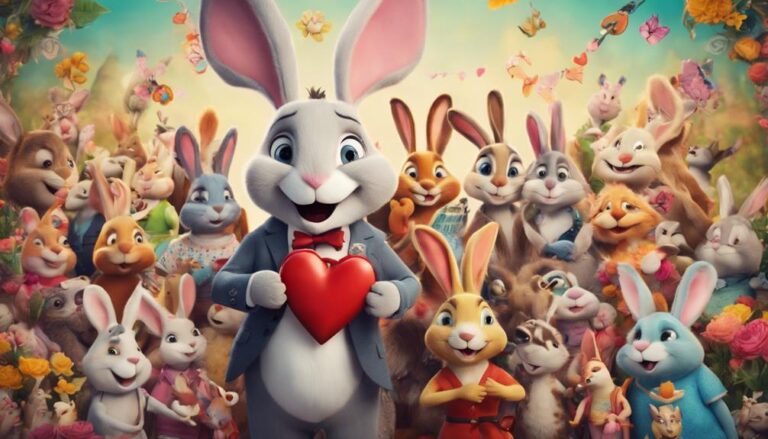3 Best Animation Film Industry Consumer Trends
As you explore the vibrant world of animation films, you'll notice a shift in consumer preferences. The industry is undergoing a transformation, driven by three key trends that are reshaping the way we engage with animated content. You're likely curious about what's behind this evolution. From the rise of immersive experiences that transport you into new worlds to the resurgence of nostalgic classics and the growing demand for diverse storytelling, these trends are redefining the animation landscape. But what exactly is driving these changes, and how will they impact the films you love?
Key Takeaways
- Immersive experiences are driving the animation industry forward, with VR and AR technologies expected to reach $44.7 billion by 2024.
- Nostalgia is fueling new content creation, with retro revivals and reboots of classic cartoons and films seeing significant success.
- Diverse storytelling is resonating globally, with films incorporating diverse cultural representation seeing higher engagement rates and revenue.
- Animation is providing a platform for marginalized communities to share their stories and experiences, driving engagement and revenue.
- The global demand for immersive and diverse animation content is expected to continue growing, shaping the future of the industry.
Immersive Experiences Take Center Stage
As you step into the world of animation, you're likely to notice a seismic shift towards immersive experiences that transport audiences beyond the boundaries of traditional storytelling. This trend is driven by the increasing popularity of Virtual Reality (VR) and Augmented Reality (AR) technologies.
According to a recent report, the global VR market is expected to reach $44.7 billion by 2024, with AR following closely behind. Animation studios are capitalizing on this growth by creating immersive experiences that blur the lines between reality and fantasy.
You'll find that many studios are now incorporating VR and AR elements into their productions, allowing audiences to engage with their favorite characters and stories in new and innovative ways.
For instance, VR experiences like 'Asteroid Day' and 'Allumette' have already gained critical acclaim, while AR apps like 'Pokémon Go' have become cultural phenomenons.
As the technology continues to evolve, you can expect to see even more sophisticated and interactive experiences emerge, further redefining the animation landscape.
Nostalgia Drives New Content Creation
You're likely to find that nostalgia is playing a significant role in shaping the animation industry's content creation pipeline, with studios tapping into the collective nostalgia of audiences to reimagine beloved classics and revitalize dormant franchises. This trend is driven by the desire to recreate the magic of childhood favorites, while also introducing them to new generations.
| Retro Revivals | Childhood Classics |
|---|---|
| Disney's live-action remakes of Aladdin and The Lion King | Original animated films from the 90s, such as Mulan and Tarzan |
| Netflix's reboot of He-Man and the Masters of the Universe | Classic cartoons like Scooby-Doo and Looney Tunes |
| Sony's Spider-Man: Into the Spider-Verse, inspired by comic book nostalgia | Beloved anime series like Dragon Ball Z and Pokémon |
Studios are leveraging nostalgia to create new content that resonates with audiences of all ages. By reimagining classic characters and storylines, they're able to tap into a sense of nostalgia and familiarity, while also introducing new twists and styles to appeal to modern audiences. This trend is expected to continue, as studios seek to capitalize on the power of nostalgia to drive engagement and box office success.
Diverse Storytelling Resonates Globally
The animation industry's shift towards diverse storytelling is yielding impressive results, with films that showcase underrepresented cultures and perspectives resonating strongly with global audiences. You're likely aware that cultural representation matters, and it's paying off at the box office. As you explore the current landscape of animation, you'll notice that films with diverse leads and storylines are breaking records and winning hearts.
Global perspectives drive engagement: Films that incorporate diverse cultural representation see higher engagement rates and longer viewing times.
Underrepresented voices are being heard: Animation is providing a platform for marginalized communities to share their stories and experiences.
Diverse storytelling boosts revenue: Films with diverse leads and storylines are generating higher revenue and performing better at the box office.
Audiences crave authenticity: Viewers are responding positively to authentic representations of diverse cultures and perspectives.
As the animation industry continues to evolve, it's clear that diverse storytelling is here to stay. By incorporating global perspectives and cultural representation, animators and studios can create content that resonates with audiences worldwide.
Frequently Asked Questions
What Percentage of Animation Films Are Produced for Streaming Services?
You'll be surprised to know that around 40% of animation films are now produced specifically for streaming services, driven by the "streaming wars" and the demand for original content that sets platforms apart from the competition.
How Do Animation Films Impact Environmental Awareness Among Children?
You'll find that animation films substantially impact environmental awareness among children, as they often feature eco-friendly messaging and climate heroes, inspiring 73% of kids to take action, according to a Nielsen study.
Can Ai-Generated Animation Replace Human Animators Entirely?
You wonder if AI-generated animation can replace human animators entirely, but it's unlikely, as AI lacks creative ownership and artistic integrity, which are essential for producing authentic, emotive stories that resonate with audiences.
What Is the Average Budget for an Animated Feature Film Today?
You'll find that the average budget for an animated feature film today ranges from $50 million to $250 million, largely driven by film economics and production logistics, such as labor costs, software expenses, and marketing strategies.
Do Animation Films Perform Better With Celebrity Voiceovers?
You'll find that animation films often boost their appeal with celebrity voiceovers, leveraging voice acting benefits and starring powerhouses to attract broader audiences, which can lead to increased box office success and brand recognition.
Conclusion
As you navigate the evolving animation film industry, remember that immersive experiences, nostalgia-driven content, and diverse storytelling are the keys to unleashing audience engagement.
These trends are reshaping the industry, offering new ways to interact, reminisce, and connect with diverse perspectives.
By embracing these shifts, studios and creators can tap into the desires of modern audiences, driving success and relevance in an increasingly competitive market.







